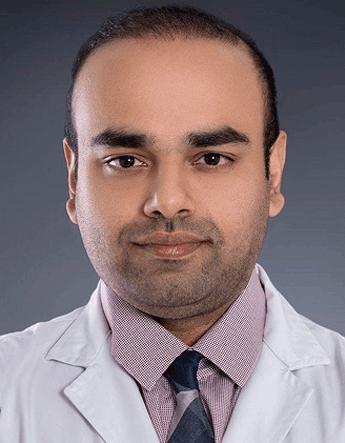Adenomyosis
Adenomyosis is a benign uterine condition where tissue similar to the endometrium (the inner lining of the uterus) grows abnormally into the muscular wall of the uterus, known as the myometrium. This causes the uterus to become enlarged and thickened, sometimes increasing to double or even triple its normal size. Over time, this can lead to a range of symptoms including painful menstruation, heavy or prolonged menstrual bleeding, pelvic discomfort, and bloating.
Unlike endometriosis, where endometrial tissue grows outside the uterus, adenomyosis remains confined to the uterine muscle. It is often underdiagnosed, partly because its symptoms can be mistaken for other gynecological conditions.
Adenomyosis is most commonly diagnosed in women between the ages of 35 and 50, especially those who have previously given birth or undergone uterine procedures such as cesarean section, dilation and curettage (D&C), or fibroid removal. Studies estimate that 11% to 13% of women are affected, although the true prevalence may be higher due to missed or incidental diagnoses. In adolescents with severe menstrual pain, approximately 2% to 5% may have underlying adenomyosis.
Common symptoms of Adenomyosis
While some individuals may have no symptoms at all, adenomyosis can present with:
Heavy menstrual bleeding (menorrhagia)
Severe menstrual cramps (dysmenorrhea)
Chronic pelvic pain
Pain during intercourse (dyspareunia)
Bleeding between periods (metrorrhagia)
Abdominal bloating or pressure
Infertility or difficulty conceiving
An enlarged, tender uterus that may be noticed during a pelvic exam
Approximately one in three women with adenomyosis experience no symptoms, and the condition is sometimes discovered incidentally during imaging or surgery for unrelated issues.
Causes
The precise cause of adenomyosis remains unclear, but several factors may contribute:
- Hormonal influence (particularly estrogen)
- Prior uterine trauma or surgery
- Inflammatory responses in the uterus
- Genetic predisposition
Women at higher risk typically include those over 40, those who have given birth, and those with a history of uterine surgery or endometriosis. However, adenomyosis is increasingly diagnosed in younger women with abnormal bleeding or pelvic pain.
Complications
If untreated, adenomyosis may progressively worsen. Common complications include:
- Anemia, due to chronic heavy bleeding, leading to fatigue, weakness, and pallor
- Chronic pelvic pain, which may interfere with daily functioning and quality of life
- Infertility, possibly due to impaired implantation or disrupted uterine environment
- Pregnancy complications, such as miscarriage or preterm labor
While adenomyosis is not cancerous and does not increase cancer risk, it can significantly affect reproductive health and day-to-day wellbeing.
Diagnosis
Diagnosis begins with a detailed clinical evaluation, including a pelvic exam. Your doctor may note a soft, enlarged, or tender uterus.
Common diagnostic tools include:
- Transvaginal Ultrasound: May reveal thickening of the uterine muscle or irregular areas within the uterine wall.
- MRI (Magnetic Resonance Imaging): Offers greater accuracy, especially when ultrasound findings are unclear. It typically shows a thickened junctional zone or localized areas of abnormal tissue within the uterus.
- Biopsy: Rarely helpful for diagnosing adenomyosis, since the abnormal tissue lies deep within the muscle and is not easily sampled.
Treatment Options
Conservative (Medical) Management
Treatment may vary depending on your age, symptom severity, and reproductive goals.
Pain Management: Non-steroidal anti-inflammatory drugs (NSAIDs) like ibuprofen can reduce menstrual cramps.
Hormonal Therapy:
- Oral contraceptive pills
- Hormonal intrauterine devices (IUDs) like Mirena®
- Injectable progestins such as Depo-Provera®
- Tranexamic Acid: A non-hormonal medication that reduces menstrual blood loss.
These treatments often offer symptom relief but may not work for everyone.
Surgical Options
- Adenomyomectomy: In select cases, especially when the disease is localized, surgical removal of adenomyotic tissue may be performed to preserve the uterus.
- Hysterectomy: Complete removal of the uterus is considered definitive treatment for those who do not wish to retain fertility or for whom other therapies have failed.
Minimally Invasive Treatment: Uterine Artery Embolization (UAE)
Uterine Artery Embolization (UAE) is an image-guided, non-surgical procedure performed by an interventional radiologist. It offers an effective alternative to hysterectomy, especially for patients who wish to preserve their uterus.
Why Choose Embolization Over Other Treatments?
- Minimally invasive: No surgical cuts or stitches
- Short recovery: Most patients return to daily activities within a few days
- Preserves the uterus: Can be considered for women who wish to retain fertility
- Outpatient procedure: No need for overnight hospital stay
- High success rate: Over 80% of patients report significant symptom relief
Studies show that when smaller particles are used to target deeper vessels (such as in the “1–2–3 protocol”), a higher rate of tissue shrinkage and symptom improvement can be achieved. However, techniques and particle sizes may vary depending on individual anatomy and clinical goals.
How Does Uterine Artery Embolization Work At Rivea?
- A catheter is inserted through a small puncture in the groin or wrist.
- Tiny particles are injected into the arteries that supply blood to the uterus.
- These particles block blood flow to the adenomyotic tissue, causing it to shrink and symptoms to improve.
Why Choose Rivea?
At RIVEA Vascular Institute, Hyderabad, we provide advanced, image-guided solutions for gynecologic conditions such as adenomyosis. Our interventional radiology team, led by Dr. Arjun Reddy (MBBS, MD, FVIR), offers precise and minimally invasive alternatives to major surgery.
What sets RIVEA apart?
- Expertise in interventional radiology
- State-of-the-art imaging and equipment
- Personalized care and faster access to treatment
- Minimal discomfort, maximum outcomes
- Uterus-sparing treatments for women seeking non-surgical options
Click here to learn more about:
Uterine Artery Embolization (UAE)
For any inquiries, post your query here:
Ask Rivea
Contact us today to explore your options.
Call Now
Our Team
-

Dr. Arjun Reddy
MBBS, MD
Chief Interventional RadiologistDr. Arjun Reddy is a highly accomplished Interventional Radiologist with extensive international training and a track record of pioneering minimally invasive, image-guided procedures in India.
View Profile Book an Appointment



